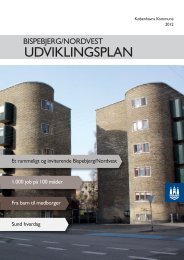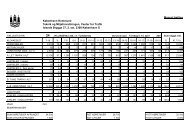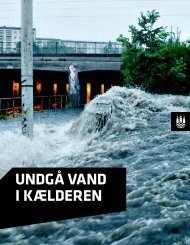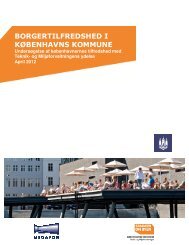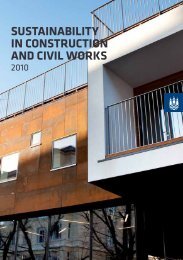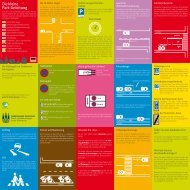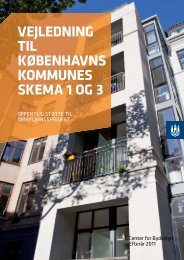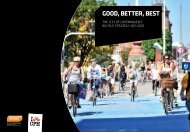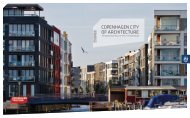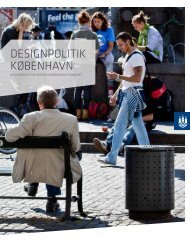INTEGRATED URBAN RENEWAL - Itera
INTEGRATED URBAN RENEWAL - Itera
INTEGRATED URBAN RENEWAL - Itera
- No tags were found...
Create successful ePaper yourself
Turn your PDF publications into a flip-book with our unique Google optimized e-Paper software.
DEVELOPMENT OF THE CITY<br />
Development of the city<br />
Europe's largest climbing wall in the attractively landscaped<br />
Banana Park in Mimersgade district, the architecturally<br />
striking community centre<br />
in Jemtelandsgade in Holmbladsgade<br />
district, and the coming Music<br />
Square in Øresundsvej district<br />
are all initiatives started as part of<br />
previous integrated urban renewal<br />
projects in Copenhagen. Lifting and<br />
renewing the city concerns much<br />
more than the physical amenities,<br />
however. Integrated urban renewal<br />
is an initiative that focuses on specially selected, well-defined<br />
districts which face a broad spectrum of challenges.<br />
The purpose of integrated urban renewal is to promote a<br />
new, positive development in the districts – encompassing<br />
physical, social, cultural and environmental aspects.<br />
Resident's decisions<br />
What is special about integrated urban renewal is that the<br />
wishes and efforts of the residents themselves determine<br />
the course of the project. Local resources become actively involved<br />
in all phases of the development efforts. As a result,<br />
feelings of commitment and ownership towards the district<br />
among residents and users are strengthened. Strong feelings<br />
of ownership help ensure that the initiatives taken live on<br />
The problems and solutions to be focused on will be decided<br />
in dialogue with local residents, associations, institutions,<br />
businesses, etc.<br />
after the project period has elapsed.<br />
District lift, area renewal or partnership project<br />
Up until 2010, unified urban renewal efforts in Copenhagen<br />
have had various names: district renewal, partnership<br />
projects but today, such efforts are known as integrated urban<br />
renewal. It is the ambition of the City of Copenhagen to<br />
initiate one or two new integrated urban renewals each year.<br />
The projects<br />
Integrated urban renewal initiates positive development.<br />
The areas chosen for integrated urban renewal are therefore<br />
districts which already possess considerable potentials<br />
and qualities. The areas are also characterised by a high<br />
proportion of small, outdated flats with lacking installations,<br />
relatively poor and run-down amenities (open spaces,<br />
institutions, etc.), integration problems and a large number<br />
of residents outside the labour market.<br />
Physical and social planning are therefore important elements<br />
of integrated urban renewal efforts. It is especially<br />
the physical results in the district which are visible to residents<br />
and the public at large. The physical projects are also<br />
those which attract most attention from residents when<br />
work groups are appointed and citizen dialogues held. With<br />
regard to social initiatives, integrated urban renewal focuses<br />
on building networks in order to get the district to function<br />
better. Almost all activities have a sub-objective of strengthening<br />
the district's civil network. Activities directed at social<br />
challenges are performed in close cooperation with other<br />
social and housing projects in the area.<br />
4 5<br />
Funding<br />
Basically, integrated urban renewal is a publicly financed initiative<br />
in which the state pays 1/3 and Copenhagen Municipality<br />
2/3 of the total cost. Part of the preliminary work involved<br />
in area renewal consists of drawing up an investment<br />
statement covering the possibilities for both private and<br />
public investment. Integrated urban renewal is thus characterised<br />
by a joint funding model in which contributions are<br />
received from the state, municipality, private foundations,<br />
private property owners, companies and associations.<br />
The integrated urban renewal process in rough outline<br />
Integrated urban renewal consists of three different phases.<br />
The first phase is the start-up phase in which the first citizen<br />
involvement activities take place and work groups are<br />
appointed. The work groups then draw up a district plan in<br />
cooperation with the municipal departments. The district<br />
plan is the programme on which area renewal will be based<br />
during the project period. It contains a description of the area's<br />
potentials and challenges and suggests specific projects<br />
and more general visions for area renewal. The district plan<br />
is then discussed and approved within the political system.



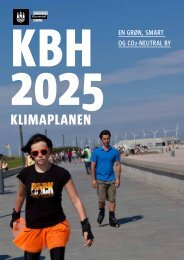
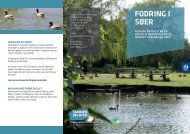
![Lokalplan 301[1] - Itera](https://img.yumpu.com/49288321/1/184x260/lokalplan-3011-itera.jpg?quality=85)
